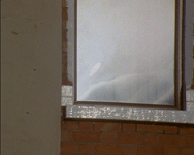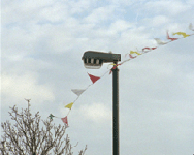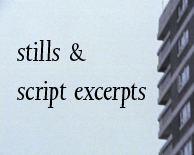

16mm digitally transferred, 2010, 31'



16mm digitally transferred, 2010, 31'




Click here to watch full film on Vimeo.
NLR sets out to explore the distinct ‘unity of atmosphere’ of a specific Belfast neighbourhood, the New Lodge Road. Many similar ‘link roads’ in the inner city, running between the major arterial routes, were demolished between the 1960s and the 1980s; on others, the peace walls either cut straight across them or run down either side, turning them into lifeless corridors. NLR presents a filmic impression of the activity that still thrives on a single street, through a concentration on colours, details, surfaces, styles of houses and flats, movement, comings and goings.
New Lodge is defined to outsiders by its republican politics. NLR is not ‘about’ New Lodge in the straightforward sense; it is not a film about its political identity or its particular history. Nor is it a film made ‘for’ New Lodge, ‘celebrating’ a community. But a central part, even of the superficial visual identity of the area, is its explicit political self-representation. This is most obvious in the road’s various murals, which present a certain framing of the area's history and character.
NLR, then, sets itself a specific problem: how to make a film in New Lodge that’s neither political propaganda (naïve or knowing), nor bad journalism, nor unreflexive documentary, nor reductive community project, but which instead foregrounds certain factors that have also shaped the area, such as class, and ideas of ‘belonging’. Can images of an already over-represented place like Belfast become the setting for these more general considerations? In short, is it possible to make political representations in a place where ‘Politics’ has been so narrowly defined, and where representation became such an automatic and clichéd affair.
In part, the answer adopted to this problem is to foreground the problem itself: by concentrating in great detail on the exterior surfaces of the street – the walls, the pavements, the arrangements of colour and lines – the film underlines its own ‘outsider’ status, emphasising that these ‘surfaces’ are themselves the boundaries between private and public, inside and outside. In this highly-politicised area, in a rapidly-regenerating city, such boundaries are by no means simple however, and the soundtrack questions the degree to which any space is really ‘private’ here; and by extension, whether any is truly ‘public’.
In the soundrack, a male and a female voice dramatise, through their indirect disagreements, some of these ideas, recalling fragmented remembrances of their own past relationship.
The dialogue is interspersed with a specially-commissioned musical score performed on steel guitars and the Indian sarod.
Declan Long wrote about NLR in his book Ghost-Haunted Land: Contemporary Art and Post-Troubles Northern Ireland. Click here to read an excerpt from the book.
Written, filmed and edited: Daniel Jewesbury
Female: Abbie McGibbon
Male: Paddy Wallace
Steel guitars: Ivan McLernan
Sarod: Ciaran Murphy
Recording assistant: Stuart Watson
Camera assistants: Gerard Carson, Robert Anderson
Steadicam operator: Stuart Lambe
Produced with funds from the National Lottery distributed by the Arts Council of Northern Ireland.
© Daniel Jewesbury